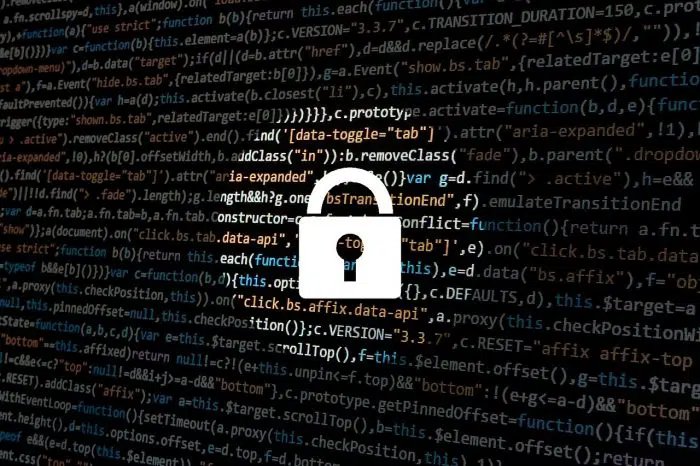The internet is amazing—when it’s amazing. It can also be scary, frightening, and downright dangerous. Today, more than ever, making sure to protect yourself online is a vital part of productivity.
When you don’t protect yourself online, it can be chaotic to correct. Fixing the mess that can happen when you are careless with data – or even not diligent with guarding your data – can waste tons of valuable time and energy.
What information should be considered to protect yourself online?
Financial Data
The most common thing people think when they hear the risks of data compromise online, is some sort of monetary fraud. This includes fraud through theft of credit card data and banking information. Likewise, theft of other important financial accounts.
While most big retailers or companies you might pay online have secure websites, all of them don’t. And even the ones that do have the biggest, baddest, security can sometimes experience data breaches. Even big banks, investment firms, and retirement fund companies have experienced these issues. Therefore, keep your eye on statements. Also, sign up for alerts. This lets you be aware as soon as something goes wrong. Additionally, it increases the likelihood of stopping any issues in their tracks before they become major.
Of course, the retailers or institutions themselves will usually notify you if an issue has occurred. Then, they will offer some free credit monitoring. However, the notification often occurs months after the incident. And if the worst happens and your info is stolen and used, the damage is done. Now it’s your responsibility to fix it.
In such cases, productivity is out the window as you spend hours upon hours, jumping through hoops to remedy the situation. In fact, the Federal Trade Commission (FTC) – which tracks identity theft statistics, helps victims, and coordinates responses by various governmental agencies – estimates that recovering from identity theft takes an average of six months and 200 hours of work.
Social Data
Pretty much all information you put on the internet – or put there about you – is also subject to abuse, no matter how innocuous you might think it is. The first step in protecting this type of data online is realizing that cyber criminals are getting craftier and craftier. Add to that the availability and abundance of data stored online – secured and unsecured – and it doesn’t even take a genius to steal your information, your identity, your money, or all of the above!
Just consider this…
You’re likely on Facebook. Think about how much you are sharing there if your profile is not private. Even if you have access set only to “Friends”—keep in mind their networks may be able to see more of your information than you realize. This is especially true when you are “tagged” in photos.
And even if your profile is private, for women, often your maiden name is visible—even if you’re currently married. Well, the same is true about YOUR mother. And since you are likely connected to your family (and very few people make this non-public), how many persons now have access to that ubiquitous security question, “What’s your mother’s maiden name?”
And while you may be very cognizant of what you show on Facebook…
You may also be on LinkedIn, so there is your professional history. You might tweet, so there is your minute-by-minute history (often with location if you don’t turn that off). You post pics on Instagram or Flickr so if you’re not alert, you’re broadcasting much private data (such as your address if that is where the photos were taken) in the settings – or EXIF data – of pictures.
All of the above boil down to a compromise of your safety – personal and financial – and that of your family. You never know who is looking at your information—especially if you are somewhat high profile. Consequently, you don’t know what their intentions are either. Likewise, what they might stumble upon that will give them nefarious ideas.
Obviously, you don’t want to be paranoid. However, there are stories of child abductions where the perpetrator claims to have put information together of where to find the child from pictures of the child at school – or participating in school activities (so it was easy to look up name, address, route, etc.) – online. Then, used this information for attempted or actual abductions.
Furthermore, such “harmless” information can also provide an avenue for “catfishing” by ill-intentioned persons in the cyber world.
Catfishing is where someone creates a fake profile and uses it to develop a relationship based on a made-up shared similarities or connections with someone else. The person often does this by gathering data about the person they are catfishing from others who know him or her OR by scraping the data from public social media photos and information.
If the perpetrator does this with your child using things they have gathered from social media – such as hobbies or school – it can create a false sense of comradery and security with your child, possibly also allowing them to be able to lure the child into a meeting. While this may seem extreme, it does happen. And though, this danger goes far beyond a loss of productivity, even if such a situation only became an inconvenience, it’s a inconvenient risk you just don’t want to be dealing with at any time.
Phishing, Hacking, and Keystroke Tracking
Phishing is a somewhat new phenomenon. Yet, it’s one that can be the root of MANY issues with security. This includes financial security, personal security, or both! With phishing, individuals with malicious intent send emails designed to look like they are coming from companies you know and trust. They look real in almost every way. Yet, when you click on the link(s) in the message, the tracking begins. This could include tracking (and stealing) your log in information and/or every other keystroke you make, making all sorts of your private information available to them and their nefarious purposes.
On occasion, a phishing email can also open security doors in your computer, allowing hackers access to your private files. It can also provide them the ability to destroy your files – and even machine – completely.
In Part 2, we will cover how you can protect yourself – protect yourself online – from these risks.


